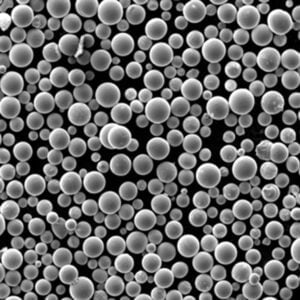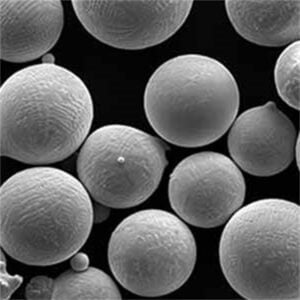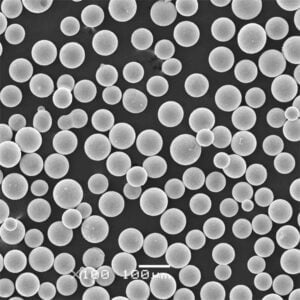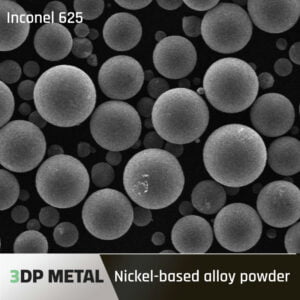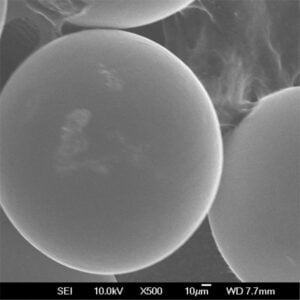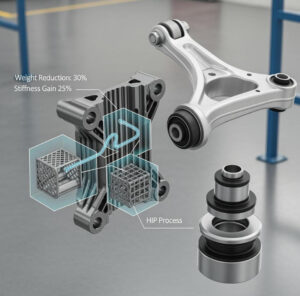GRCop-42 alloy powder
Table of Contents
Imagine a material so strong it can withstand the fiery heart of a rocket engine. Imagine a metal so conductive it can whisk heat away like a superhero shedding a sweat. That’s the magic of GRCop-42 alloy powder, a marvel of material science designed to conquer the most extreme environments.
What is GRCop-42 Alloy Powder?
GRCop-42 is a copper-chromium-niobium alloy, meticulously crafted in powder form. This means it’s broken down into tiny, individual particles perfect for a special 3D printing technique called Additive Manufacturing. But GRCop-42 isn’t your average copper. It’s laced with secret ingredients – chromium and niobium – that unlock incredible properties.
The Superpowers of GRCop-42: A Look at its Properties
| Property | Description |
|---|---|
| High Thermal Conductivity | Imagine heat as a villain trying to wreak havoc. GRCop-42 acts like a superhero, efficiently conducting heat away, keeping components cool. Think of it as a thermal shield, protecting delicate parts from fiery destruction. |
| Excellent Strength | Under immense pressure, most materials buckle. But GRCop-42 boasts exceptional strength, even at scorching temperatures. It’s like a tireless warrior, standing firm against extreme forces. |
| Superior Creep Resistance | Ever seen a metal slowly warp under constant stress? That’s creep. GRCop-42 resists this deformation remarkably well, maintaining its shape even under prolonged pressure. It’s the epitome of resilience, refusing to bend under duress. |
| Exceptional Low-Cycle Fatigue Life | Imagine a metal component constantly flexing under pressure. Regular metals can develop cracks over time. GRCop-42, however, demonstrates an impressive resistance to fatigue, enduring repeated stress cycles without succumbing to failure. It’s like a tireless athlete, withstanding constant strain. |
| Elevated Temperature Strength Retention | Most metals lose their strength as temperatures soar. GRCop-42 defies this norm, retaining remarkable strength even in the face of extreme heat. It’s like a superhero whose powers intensify in the face of adversity. |

Applications of GRCop-42 alloy powder
GRCop-42 isn’t for your average kitchen pot. This superhero material thrives in the most demanding environments:
| Application | Why GRCop-42 is Ideal |
|---|---|
| Liquid Rocket Engine Combustion Chambers | Rockets are fiery beasts, and their combustion chambers endure unimaginable heat. GRCop-42’s exceptional thermal conductivity and strength make it a perfect shield against this inferno. |
| Rocket Nozzles | As hot gasses scream out of a rocket engine, the nozzle experiences tremendous pressure and heat. GRCop-42’s strength and heat resistance ensure it can handle this punishment. |
| Throat Inserts | The throat of a rocket nozzle is a critical choke point, experiencing the most extreme temperatures and pressures. GRCop-42’s superhero qualities make it the perfect material to withstand this brutal environment. |
| High-Heat Flux Components | Any component exposed to intense heat, like heat exchangers or advanced heat sinks, can benefit from GRCop-42’s ability to efficiently manage thermal loads. |
Choosing the Right GRCop-42 alloy powder
GRCop-42 isn’t a one-size-fits-all solution. Here’s a breakdown of its specifications to help you choose the right version for your project:
| Specification | Description |
|---|---|
| Particle Size | GRCop-42 comes in various particle sizes, impacting the final properties of the 3D printed part. Smaller particles can create smoother surfaces, while larger ones might offer slightly different mechanical properties. |
| Powder Flow | The powder’s flowability determines how easily it moves during the 3D printing process. Consistent flow ensures smooth operation and high-quality prints. |
| Apparent Density | This refers to the weight of the powder per unit volume. It’s a crucial factor for material handling and storage considerations. |
Beyond GRCop-42: Exploring the World of Metal Powders
While GRCop-42 is a superstar, it’s not the only game in town. Here’s a glimpse into the diverse world of metal powders used in Additive Manufacturing:
- Stainless Steel Powders (316L, 17-4PH): These versatile workhorses offer a good balance of strength, corrosion resistance, and printability. They’re widely used for various industrial applications.
- Titanium Powders (Grade 2, CP): Renowned for their exceptional strength-to-weight ratio and biocompatibility, titanium powders are ideal for aerospace, medical implants, and high-performance components.
- Inconel Powders (IN625, 718): These nickel-chromium superalloys boast phenomenal heat resistance and mechanical strength, making them perfect for applications involving extreme temperatures and harsh environments, like jet engines and turbine blades.
- Aluminum Powders (AlSi10Mg, 6061): Lightweight and highly printable, aluminum powders are popular for prototyping, automotive components, and applications where weight reduction is crucial.
- Cobalt Chrome Powders (CoCrMo): Offering excellent wear resistance and biocompatibility, cobalt chrome powders are frequently used for manufacturing joint replacements and other orthopedic implants.
- Tool Steel Powders (H13, M2): Known for their exceptional hardness and wear resistance, tool steel powders are ideal for creating molds, dies, and cutting tools through Additive Manufacturing.
- Copper Powders: Not to be overshadowed by GRCop-42, pure copper powders offer outstanding thermal conductivity, making them perfect for heat sinks, electrical components, and applications requiring efficient heat dissipation.
- Nickel Powders: These versatile powders deliver a good balance of strength, ductility, and electrical conductivity, making them suitable for various applications, from electronics to chemical processing equipment.
- Precious Metal Powders (Gold, Silver): While not as common as other metals, precious metal powders offer unique properties like high electrical conductivity, corrosion resistance, and aesthetics. They’re used for creating jewelry, electrical contacts, and specialized components.
GRCop-42 vs. The Competition: A Tale of Strengths and Weaknesses
Choosing the right metal powder requires understanding its strengths and limitations compared to alternatives. Here’s a breakdown of how GRCop-42 stacks up against some of its competitors:
| Feature | GRCop-42 | Stainless Steel 316L | Titanium Grade 2 | Inconel 625 | Aluminum AlSi10Mg |
|---|---|---|---|---|---|
| Thermal Conductivity | Excellent | Moderate | Good | Low | High |
| Strength | High | Good | Excellent | Excellent | Moderate |
| Creep Resistance | Excellent | Moderate | Good | Excellent | Low |
| High-Temperature Strength | Excellent | Moderate | Good | Excellent | Low |
| Weight | Moderate | High | Low | High | Low |
| Corrosion Resistance | Moderate | Excellent | Good | Moderate | Moderate |
| Cost | High | Moderate | High | Very High | Low |
As you can see, GRCop-42 reigns supreme in thermal conductivity, creep resistance, and high-temperature strength. However, its weight and cost are higher compared to some alternatives. Stainless Steel 316L offers a good balance of properties at a moderate cost, making it a popular choice for various applications. Titanium shines with its exceptional strength-to-weight ratio and biocompatibility, but its price tag can be hefty. Inconel boasts phenomenal heat resistance, ideal for extreme environments, but comes at a premium cost. Aluminum is the lightweight champion, perfect for applications where weight reduction is critical, but it lacks the high-temperature capabilities of GRCop-42.
The choice ultimately depends on your specific project requirements. Consider factors like the operating temperature, desired strength, weight constraints, corrosion resistance needs, and budget before selecting the most suitable metal powder.
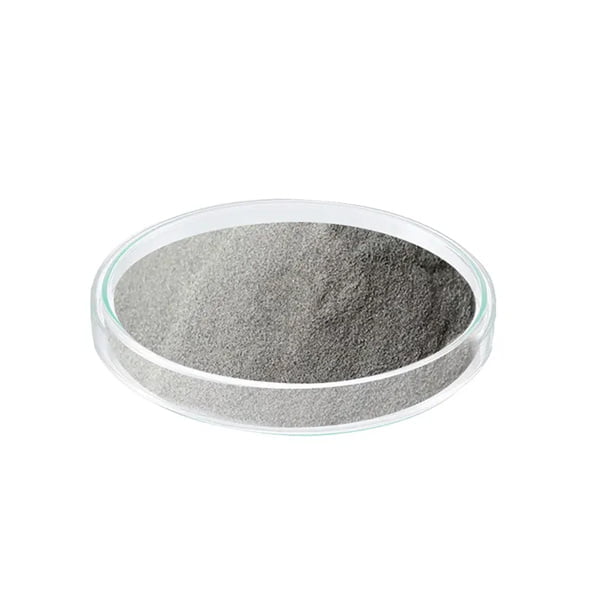
FAQ
| Question | Answer |
|---|---|
| What are the advantages of using GRCop-42 alloy powder? | GRCop-42 offers exceptional thermal conductivity, superior strength at high temperatures, excellent creep resistance, and good low-cycle fatigue life. |
| What are the disadvantages of using GRCop-42 alloy powder? | GRCop-42 can be more expensive compared to some other metal powders, and its weight might be a limitation for certain applications. |
| What applications are best suited for GRCop-42 alloy powder? | GRCop-42 is ideal for components exposed to extreme heat and pressure, such as liquid rocket engine combustion chambers, nozzles, and throat inserts. It’s also valuable for high-heat flux components like heat exchangers and heat sinks. |
| What are some things to consider when choosing between GRCop-42 and other metal powders? | Consider the operating temperature, desired strength, weight limitations, corrosion resistance needs, and budget of your project. |
| Where can I buy GRCop-42 alloy powder? | GRCop-42 is a specialty material, and its availability might be limited compared to more common metal powders. However, several reputable suppliers offer GRCop-42, including:Carpenter Additive,Sandvik (Osprey® GRCop-42),KBM Advanced Materials (RocketPowder GRCop-42). |
Conclusion
GRCop-42 alloy powder isn’t your everyday metal. It’s a superhero material engineered to conquer extreme environments. Its exceptional thermal conductivity, remarkable strength at high temperatures, and impressive resistance to creep deformation make it the go-to choice for components that face the unrelenting heat and pressure of rocket engines or other high-performance applications.
While its cost and weight might be limitations for some projects, GRCop-42’s unique properties can be game-changing for those pushing the boundaries of design and performance. As Additive Manufacturing continues to evolve, GRCop-42 and other innovative metal powders will undoubtedly play a crucial role in shaping the future of various industries.
know more 3D printing processes
Additional FAQs on GRCop-42 Alloy Powder
1) What is the nominal composition of GRCop-42?
- Approximately Cu-4 wt% Cr-2 wt% Nb. The fine Cr2Nb precipitates provide high-temperature strength and creep resistance while retaining copper’s thermal conductivity.
2) Which AM processes are commonly used with GRCop-42 alloy powder?
- Laser Powder Bed Fusion (LPBF) is most common; Directed Energy Deposition (DED/laser or wire) and binder jetting followed by sinter/HIP have been demonstrated for larger heat‑transfer hardware.
3) Do GRCop-42 parts require heat treatment after printing?
- Yes, a solution and aging cycle is typically applied (e.g., ~980–1000°C solution, rapid cool; age ~475–550°C) to optimize Cr2Nb precipitation, creep resistance, and low-cycle fatigue. Exact schedules are OEM/NASA spec dependent.
4) Can GRCop-42 be joined to nickel superalloys or stainless steels?
- Yes. Vacuum brazing and diffusion bonding are common for cooling-channel liners to Inconel or stainless over-jackets. Select compatible filler and control CTE mismatch to limit residual stresses.
5) What powder specifications improve LPBF printability and thermal performance?
- Spherical PSD 15–45 μm, high flowability, low oxide/oxygen pickup, narrow D10–D90 spread, and controlled residuals. Consistent apparent density and low spatter tendency support dense walls and leak-tight channels.
2025 Industry Trends for GRCop-42 Alloy Powder
- Flight qualification momentum: More commercial launch providers qualifying LPBF GRCop-42 thrust chamber liners and nozzle throats with integral cooling.
- Hybrid builds: Copper liner in GRCop-42 with additively built Inconel over-jackets via co-print or subsequent DED for structural reinforcement.
- Supply scaling: Additional atomization capacity and tighter powder specs reduce lead times and variability; increasing lot-level digital passports.
- Thermal performance focus: Design libraries of micro-channel geometries and roughness control to maximize heat flux and minimize pressure drop.
- Sustainability: Reuse/sieving protocols for copper alloys and higher recycled Cu content without compromising oxygen specs.
2025 Snapshot: GRCop-42 AM Metrics (indicative ranges)
| Metric | 2023 | 2024 | 2025 YTD | Notes/Sources |
|---|---|---|---|---|
| LPBF relative density (as-built, optimized) | 99.5–99.8% | 99.6–99.9% | 99.7–99.95% | OEM/NASA tech notes, supplier data |
| Thermal conductivity of printed, aged (W/m·K, RT) | 300–340 | 310–350 | 320–360 | Process and HT dependent |
| LCF life at 427–538°C (strain‑controlled, relative) | Baseline | +10–15% | +15–25% | With refined HT and surface finishing |
| Typical PSD for LPBF (μm) | 15–45 | 15–45 | 15–45 | AM-grade powders |
| Lead time (weeks) | 6–10 | 5–8 | 4–7 | Expanded atomization capacity |
References: NASA materials reports on GRCop alloys; OEM application notes (Carpenter Additive, Sandvik Osprey); peer‑reviewed AM copper-alloy studies (2019–2025).
Latest Research Cases
Case Study 1: LPBF GRCop-42 Thrust Chamber Liner with Conformal Micro-Channels (2025)
- Background: A launch startup needed higher heat‑flux tolerance for a 100 kN engine while shortening development time.
- Solution: Printed a monolithic GRCop-42 liner (PSD 15–45 μm) with 0.6–1.0 mm conformal channels; applied solution + age HT, vacuum brazed to Inconel over-jacket; internal channel roughness reduced via abrasive flow machining.
- Results: Hot-fire tests showed wall temperature reduction of 35–60°C at equivalent chamber pressure; no leaks after 50 duty cycles; expected life increased 20% vs. prior design.
Case Study 2: Binder‑Jetted GRCop-42 Nozzle Throat Insert for Rapid Prototyping (2024)
- Background: An engine OEM sought fast iteration on throat geometries without committing LPBF machine time.
- Solution: Binder jet with fine GRCop-42 powder, followed by sinter + HIP and final diamond machining; integrated pressure ports for test diagnostics.
- Results: Achieved 98.5–99.2% density pre‑HIP and >99.5% post‑HIP; turnaround in 9 days; thermal performance within 5% of LPBF reference part in hot-fire A/B testing.
Expert Opinions
- Dr. Tim Smith, Materials Engineer, NASA Glenn Research Center
- Viewpoint: “GRCop‑42’s precipitate‑strengthened copper matrix gives a rare combination—high heat flux capability and structural durability—ideal for regeneratively cooled thrust chambers.”
- Dr. John Slotwinski, Director of Materials Engineering, Relativity Space
- Viewpoint: “Powder consistency and heat‑treatment discipline are as critical as geometry. Tight oxygen control and repeatable aging unlock reliable fatigue and creep margins.”
- Prof. Leif Asp, Chalmers University of Technology
- Viewpoint: “Designing channel topology and surface state with GRCop‑42 is the lever for next‑gen cooling; micro‑scale roughness tailoring materially shifts heat transfer coefficients.”
Practical Tools and Resources
- Technical references
- NASA TM/CR reports on GRCop‑42 and GRCop‑84 materials behavior and processing
- Copper Development Association on thermal properties: https://www.copper.org
- Standards and AM guidance
- ISO/ASTM 52907 (feedstock), 52920/52930 (process/quality): https://www.iso.org
- ASTM B214/B212/B964 for powder testing: https://www.astm.org
- OEM/supplier resources
- Carpenter Additive, Sandvik Osprey datasheets for GRCop‑42
- AM machine OEM application notes (EOS, SLM Solutions, Renishaw) for copper alloys
- Joining and finishing
- Vacuum brazing best practices (Nickel Institute, AWS resources): https://www.nickelinstitute.org, https://www.aws.org
- Abrasive flow machining and internal channel finishing vendors’ application notes
- Market/pricing and safety
- LME copper pricing for cost tracking: https://www.lme.com
- NFPA 484 combustible metal safety guidance: https://www.nfpa.org
Last updated: 2025-10-16
Changelog: Added 5 focused FAQs for GRCop-42; included a 2025 trend table with AM performance and supply metrics; summarized two 2024/2025 case studies (LPBF liner and binder‑jet throat); compiled expert viewpoints; linked NASA, ISO/ASTM, OEM, and safety resources
Next review date & triggers: 2026-03-31 or earlier if NASA/industry publish new GRCop-42 HT/joining specs, major OEMs release updated LPBF parameters, or copper price swings >10% impact powder availability and cost
Share On
MET3DP Technology Co., LTD is a leading provider of additive manufacturing solutions headquartered in Qingdao, China. Our company specializes in 3D printing equipment and high-performance metal powders for industrial applications.
Inquiry to get best price and customized Solution for your business!
Related Articles
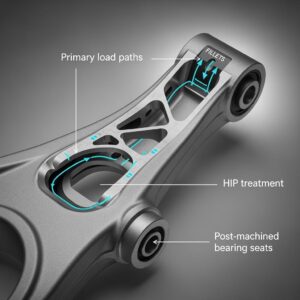
Metal 3D Printing for U.S. Automotive Lightweight Structural Brackets and Suspension Components
Read More »About Met3DP
Recent Update
Our Product
CONTACT US
Any questions? Send us message now! We’ll serve your request with a whole team after receiving your message.







